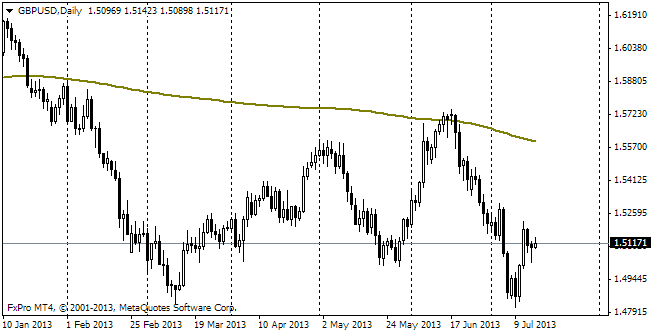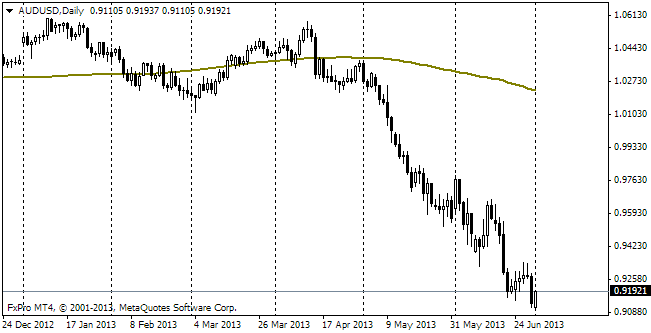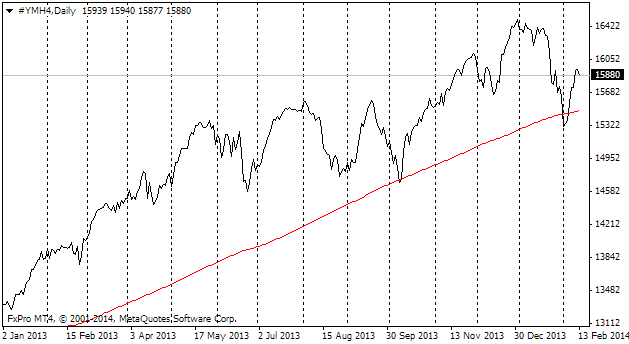EUR/usd
The euro got a hard blow yesterday, losing 90pips during the day. The selling was caused by Coeure's speech, which pointed out that the BOE's officials seriously considered setting a negative deposit rate at the last meeting. Besides, we shouldn't forget about technical factors. The pounds growth triggered by the BOE's comments broke the short-term uptrend in EURGBP, which eventually spilt over into selling of the euro against the pound, observed in other pairs as well. The euro's pullback finally brought the currency back into the downtrend, which has already been frequently mentioned in our reviews. Before that on Tuesday we saw a fierce fight of bulls and bears, with the latter gaining the upper hand. Anyway, there's no sense thinking that bulls have surrendered once and for all. The euro is again collecting strength, supported by growth of demand for risky assets. Despite the fact that at short time intervals it is hard to see any correlation, in a broader perspective the general trends coincide. Purchases in the emerging markets stir hopes for growth of the EU economy, as it had been observed for a long time before the crisis. Coeure's speech will hardly weigh upon the markets for long as the ECB's head takes a more hawkish stance. The economic growth in the region and the prospect of gradual increase in the pace make the policy easing less probable in the coming months. To the regret of euro-bulls, the EU CB provides new incentives only after some big shocks. It also doesn't seem to be eager to restore the trend growth pace, like the Fed does, or return to the lost potential, as the BOE points out in its statements.
GBP/USD
Instead of boosting sales of the sterling, the BOE's report strengthened the currency. It's all because the economic forecasts were significantly raised. The Bank stated that the unemployment rate had already reached the threshold 7%; the estimate of future economic growth was raised to 3.4% from 2.8%, expected a quarter before. It seems that willing to rehabilitate for the utterly poor quality of forecasting in the recent years, the Bank is now releasing forecasts for almost two dozens of various indicators, which may affect the medium-term inflation outlook. The absence of the clear and remote guideline for the policy has given the markets confidence in their bullish forecasts for Britain, which spurred purchasing of the pound. Wednesday's intraday low made 1.6420, today the pair is already trading higher by two figures and by 10 ones, as compared to the previous year. As you remember, at that time the sterling was actively sold and dropped below 1.50 (by 12%) in the first decade of March.

AUD/USD
The Australian unemployment rate grew from 5.8% to 6.0% in January with the participation rate remaining at the same level. It was caused by simultaneous increase in the work-force size and decrease in jobs. Instead of the expected employment growth by 15.3K, we saw its decrease by 3.7K, yet mainly among full-time employees. Their number has shrunk by almost 40K over the last two months. The aussie lost about 90 pips right after the release, bringing it back to the rates, reported at the end of the last week. Its losses would have been much bigger, but for growth of the emerging and Asian exchanges.

DIJA
The US market has recouped half of its losses incurred by the preceding decline. Our suppositions that it was just a correction after the continuous rally rather than the beginning of the downtrend proved true. The S&P 500 index has grown by 5% over the last week. Yet, experts still see an amazing similarity between the current chart and that before the crash of 1929. To be a complete similarity DIJA needs to grow by about 1.5%, then it will be possible to speak about the ‘head and shoulders' formation, which will be confirmed by further decline below the recent low.
